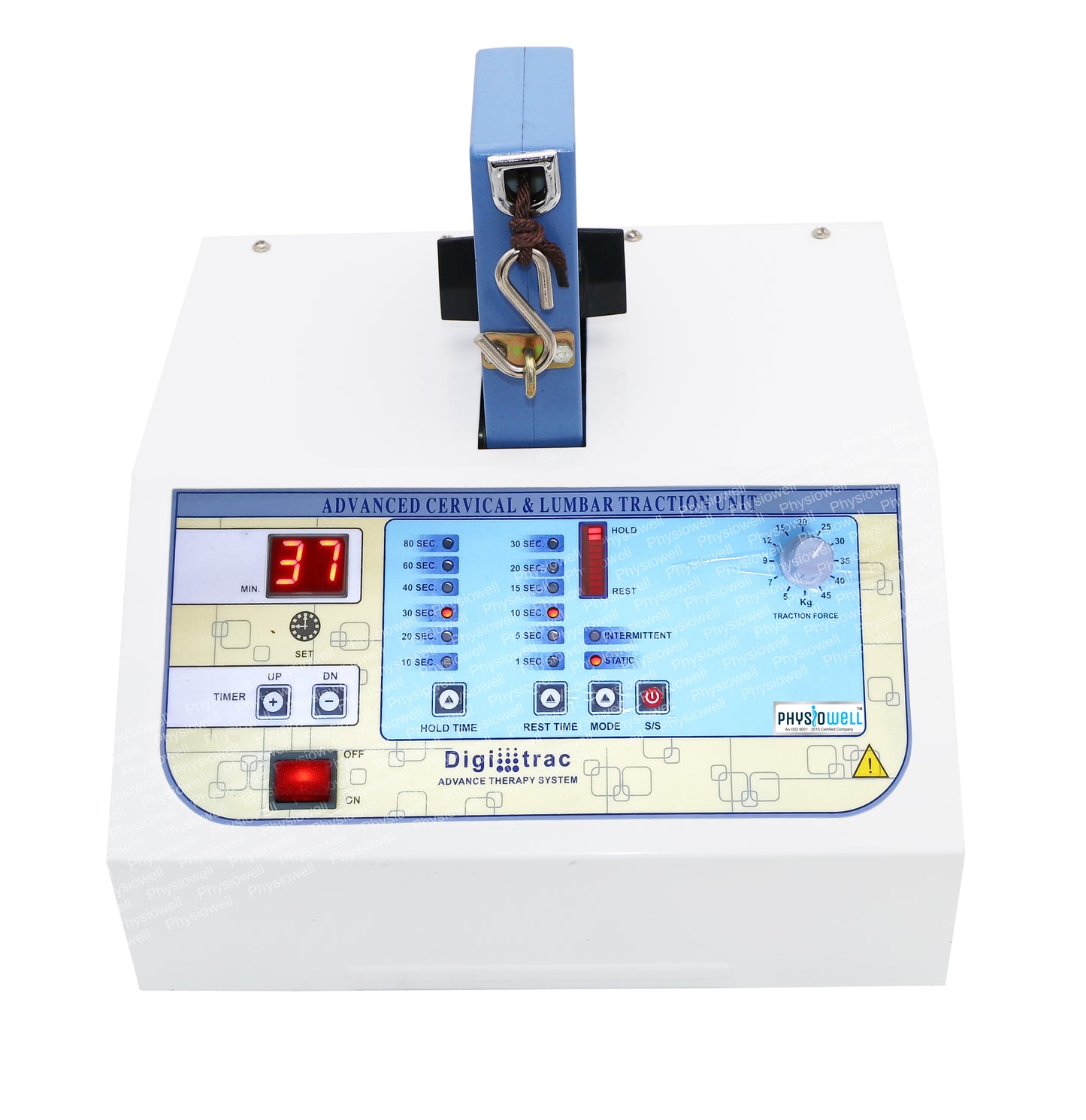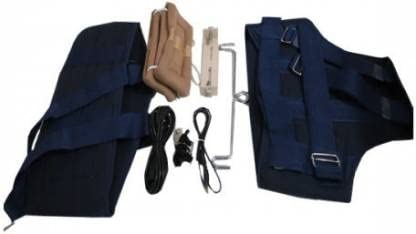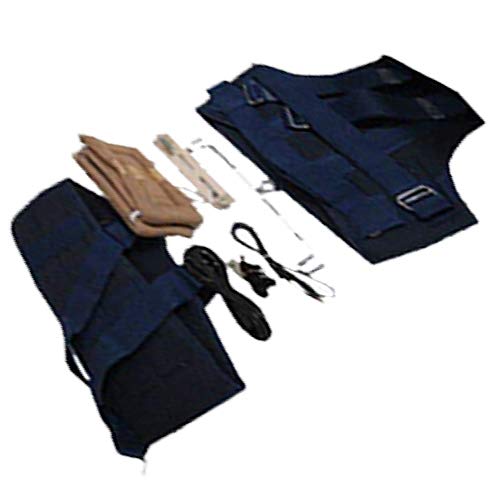Physiowell
Traction Machine
Traction Machine
Couldn't load pickup availability
PHYSIOWELL TRACTION UNIT ACCESSORIES

PHYSIOWELL TRACTION UNIT ACCESSORIES
WHAT IS TRACTION THERAPY?
A traction is a treatment option that is based on the application of a longitudinal force to the axis of the spinal column. In other words, parts of the spinal column are pulled in opposite directions to stabilize or change the position of damaged aspects of the spine. The force is usually applied to the skull through a series of weights or a fixation device and requires that the patient is either kept in bed or placed in a halo vest. Traction is a manual technique designed to reduce pressure on affected vertebral discs that are causing pain. Traction is a manual ‘stretching’ of the spine which reduces pressure on the discs and therefore reduces the individual’s pain. Cervical traction is commonly performed using manual, mechanical, or motorized methods (with a head or chin sling) or with the use of a supine posterior distraction unit. Mechanical cervical traction can be applied in the supine position, which reduces the weight of the head but increases frictional resistance. This position also allows for better control of the head by the patient and is typically more comfortable. Lumbar traction requires a significantly greater force to create a distraction of the vertebral segments than cervical traction. Common traction systems include a thoracic or chest belt with a pelvic belt, inversion, a split traction table, or an auto traction table. Split traction tables have a mobile half and a stationary half. Auto traction tables allow both segments of the table to move and are controlled by the patient. The patient assumes the most pain-free position and performs active traction by pulling on an overhead bar. The patient then uses his or her feet to activate a bar, which alternates compressive and distracting forces.
PHYSIOWELL TRACTION UNIT ACCESSORIES

PHYSIOWELL TRACTION UNIT ACCESSORIES
Product Highlights
- A complete universal traction kit.
- Beneficial for performing various tractions.
- Does include traction belts / braces.
Traction therapy, or spinal decompression therapy, is a nonsurgical treatment that uses manual or mechanical means to stretch the spine and relieve pain among affected discs. This treatment repositions herniated or bulging discs, decreasing pressure on the back. Traction pulls the vertebra away from the disc, releasing the pressure on the disc. This assists the soft part of the disc to return within the disc. This decompresses the nerve and reduces pain. This also helps to rehydrate the disc.
PHYSIOWELL TRACTION UNIT ACCESSORIES

PHYSIOWELL TRACTION UNIT ACCESSORIES 1
Cervical traction is easy to perform, and — if it works for you — can deliver quick symptom relief. People who benefit from cervical traction often have an instant improvement in their neck pain after a few treatments. Some of the most common benefits include:
- Reduced pain.
- Reduced stiffness and tension in your neck muscles.
- More flexibility in the muscles along your cervical spine.

PHYSIOWELL TRACTION UNIT ACCESSORIES 2
- Reduced pain.
- Reduced stiffness and tension in your neck muscles.
- More flexibility in the muscles along your cervical spine.

PHYSIOWELL TRACTION UNIT ACCESSORIES 3
Lumbar (low back) traction helps to separate the spaces between your vertebrae, the bones that make up your spine. In theory, slightly separating these bones can help take the pressure off pinched nerves (such as the sciatic nerve) to decrease your pain and improve your mobility

PHYSIOWELL TRACTION UNIT ACCESSORIES 4
It is also thought to reduce muscle spasm and spinal nerve root compression, as well as potentially releasing adhesions around the small joints in the spine. Several studies have found that traction can significantly improve both neck as well as back pain when used in conjunction with other therapies.
Share






